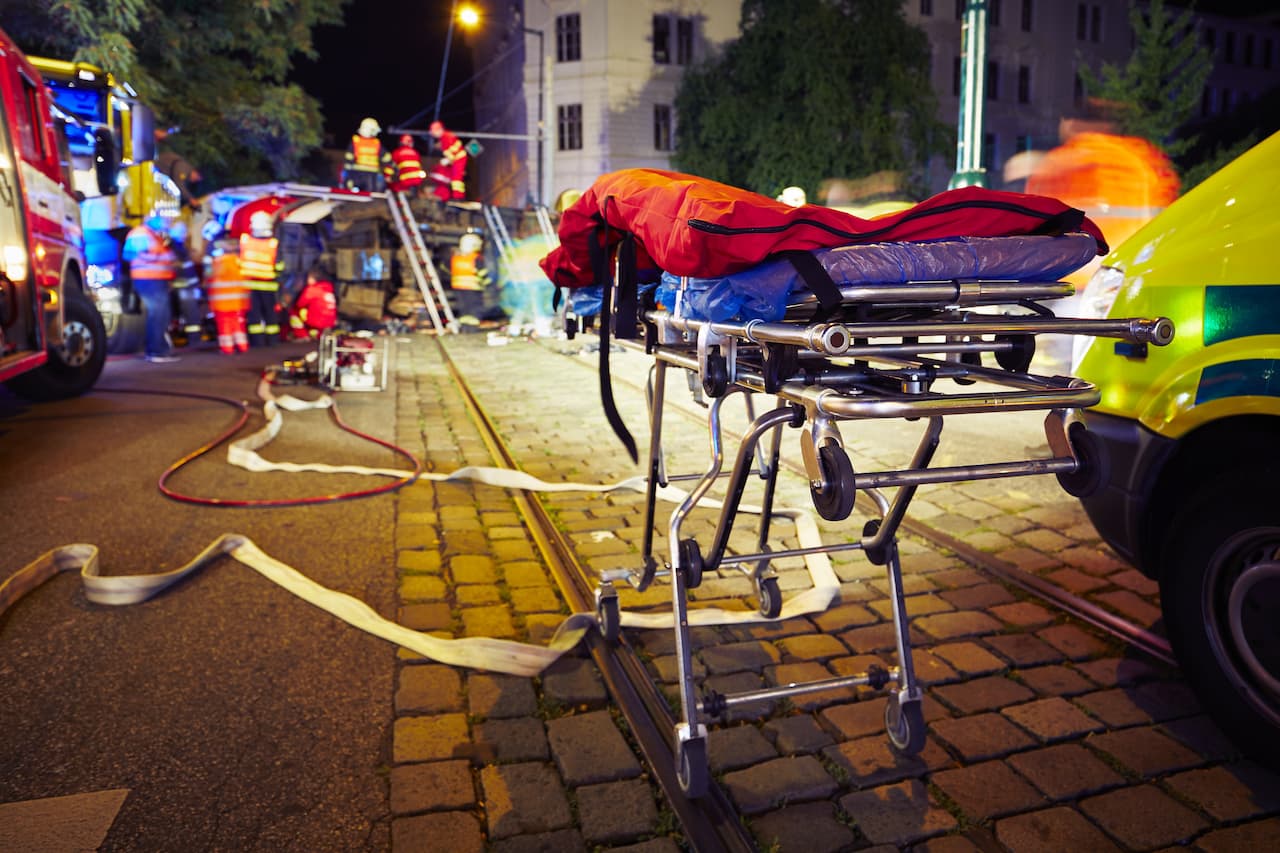
A two-vehicle collision not far from a Queens cemetery injured four people, including a 15-year-old boy and a 16-year-old girl.
The boy was driving a motorcycle on Cooper Avenue near the 88th Street intersection as the girl was behind him, when, for reasons that are unclear, the rider smacked into a Mazda. When emergency responders arrived, they found the two teens sprawled on the pavement. The boy sustained a broken leg and the girl sustained a serious head injury. Both were rushed to nearby hospitals, and apparently, neither teen victim was wearing a motorcycle helmet.
Two people in the Mazda were also injured.
Almost all car crash claims settle out of court. If there are absolutely no questions in either of the two areas listed below, a New York personal injury lawyer can often settle these claims almost immediately. These settlements are usually on victim-friendly terms.
Legal responsibility is usually the most significant issue in a car wreck claims. These determinations usually hinge on the available evidence and on the applicable law.
Evidence in a car wreck claim usually includes the Big Three of eyewitness statements, medical bills, and the police accident report.
Let's start with the police report. It's frequently the most important piece of evidence in a vehicle collision claim. Usually, these reports have three parts: an evidence summary, a witness catalogue, and an accident narrative.
The evidence summary usually includes they physical evidence, if any, immediately available at the scene. Vehicle collision damage patterns are a good example. An experienced first responder can usually tell a lot about collision angle and impact based on the crash damage. An accident resconstruction professional, who may or may not be available at the scene, can make an even more accurate determination.
A witness catalogue usually includes the names and contact information of eyewitnesses who voluntarily came forward at the scene. Occasionally, but not often, the report also includes a summary of their possible testimony. However, most emergency responders keep these summaries in field notes. They usually discard these notes after they write their reports.
The narrative is usually based on the physical evidence at the scene as well as the eyewitness testimony. When they evaluate these cases, insurance adjusters usually only look at the narrative. However, based on the above discussion, this part of a police report is often incomplete or inaccurate.
Medical bills are similar in many ways to accident reports. Both kinds of documents are usually admissible in civil proceedings. Medical bills usually contain three components as well: treatment records, treatment costs, and treatment notes.
So, medical records are valuable on several different levels. Treatment records clearly establish the care the victim received. Both treatment costs and treatment notes are usually valuable for damages purposes. An attorney can use these entries to establish the tangible economic cost of treatment, as well as intangible items like emotional distress and loss of enjoyment in life.
Finally, eyewitness testimony is usually very compelling in a civil claim. Something almost magical happens when neutral witnesses take they stand and tell the jury what they saw. Frequently, to bolster this part of the evidence, an attorney, often working with a private investigator, finds additional witnesses not listed in the police report.
Based on this evidence, a New York personal injury lawyer can usually establish a prima facie negligence claim. Usually, negligence is a lack of ordinary care. Common insurance company defenses in these claims include assumption of the risk and comparative fault.
We mentioned some elements of damages above. Usually, medical expenses, such as hospital care, follow-up treatment, prescription drugs, and physical therapy, are the largest component of damages in a car wreck claim. Other economic losses include property damage and lost wages. Victims are also entitled to compensation for their emotional distress and other noneconomic losses, as mentioned above.
Frequently, insurance company lawyers challenge the extent of damages in these cases. There is frequently a disparity between the treatment the victim needed and the treatment an insurance company is willing to pay for.
A broken leg injury, like the one in the above story, is a good example. Most insurance companies use boilerplate treatment guides. A broken leg costs X dollars to set and requires Y physical therapy sessions. Badabing, badabang, badaboom.
However, not all broken legs are the same. Doctors must often use metal implants, like screws and rods, to set these breaks. So, the medical bill is higher and the required physical therapy is more extensive. That's especially true if the victim had a pre-exsisting condition, like a bad knee.
If little Billy accidentally breaks his neighbor's window, Billy's parents are financially responsible for the window, because Billy's allowance probably is not enough to cover the damages.
Vicarious liability theories work on basically the same principle. Many negligent drivers don't have enough insurance coverage to provide fair compensation in a car crash claim. As outlined above, the damages in these cases far exceeds the damages in a broken window case. Fortunately, a vicarious lability theory could be available.
Drivers younger than 20 account for almost a tenth of fatal vehicle collisions in New York. People younger than 18 cannot legally own property. Therefore, these teen drivers normally borrow another person's vehicle. In New York, vehicle owners could be vicariously liable for car wreck damages. The negligent entustment theory usually applies if an owner knowingly allowed an incompetent operator to use a car. Evidence of incompetence includes:
New York has a very broad vicarious liability statute in this area. Every owner of a vehicle used or operated in New
York is jointly and severally liable for injuries resulting from the negligent use or operation of the vehicle by any
person with express or implied permission to do so.
Accident victims are usually entitled to substantial compensation. For a free consultation with an experienced personal injury attorney in New York, contact the Pianko Group, PLLC. We do not charge upfront legal fees in these matters.